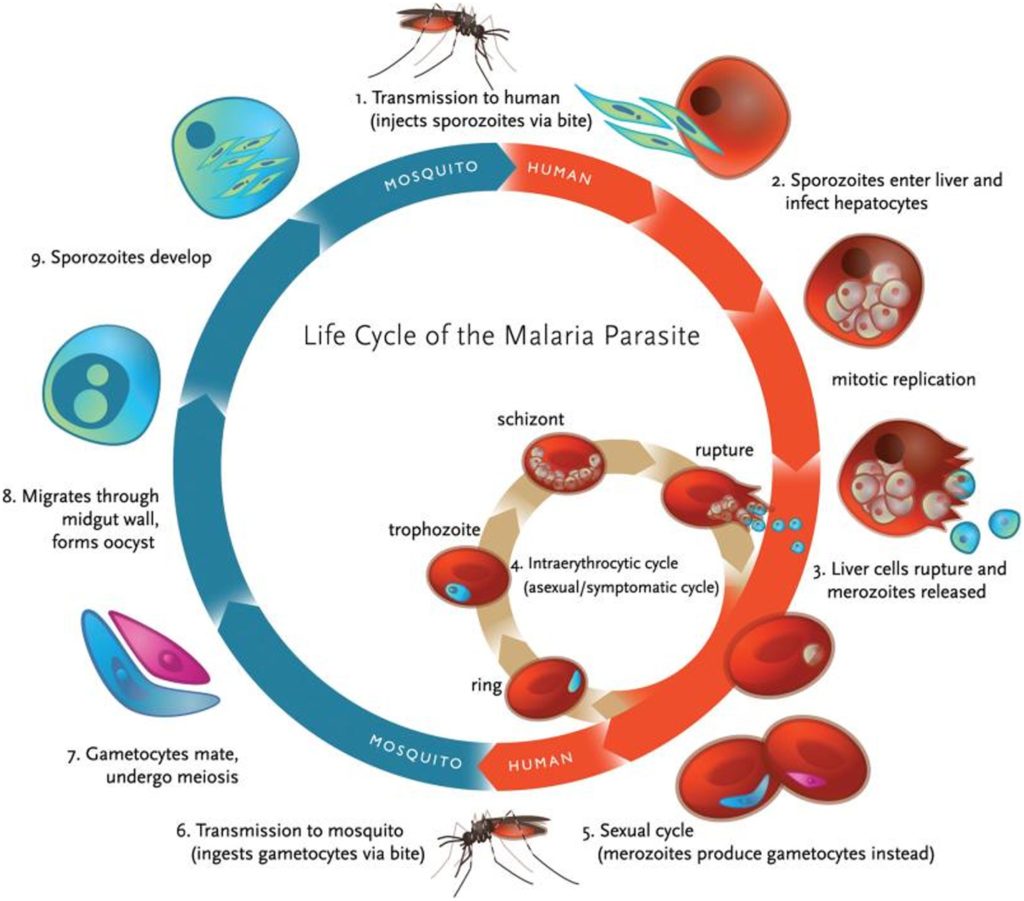Researchers find that malaria parasites prepare blueprint to attack humans
Mosquitoes have been the deadliest animal threat to humans since the dawn of man. How much they have changed the course of human history is outlined in the book The Mosquito: A Human History of Our Deadliest Predator.
Malaria kills an estimated 435,000 people worldwide every year according to the CDC. Within seconds after an infected mosquito bites, the malaria parasite navigates the host skin and blood vessels to invade the liver, where it will stay embedded until thousands of infected cells burst into the bloodstream, launching malaria’s deadly blood-stage infection. It is currently one of the deadliest diseases known to man and has no effective vaccination.

How malaria parasites prepare to attack
Thanks to a team from Seattle Children’s Research Institute led by Dr. Stefan Kappe, we now know how malaria parasites prepare their attack on the human body. This new information may help researchers strategize new ways to stop the attack by preventing the parasites from transmitting.
“Essentially the parasite makes a blueprint of the proteins it needs to infect the liver while still in the mosquito, far in advance of actually making the proteins once in the human. It’s cool biology that offers new insight into how we might begin to stop the parasite from infecting the liver.”
Dr. Stefan Kappe, senior author on the paper
Researchers get a closer look at the parasite
The Kappe Lab at Seattle Children’s is focused on understanding the complex biology of the malaria parasite and the host immune response to infection. They are exploring new strategies to protect against the multiple stages of infection that will not only prevent disease in infected individuals but break the cycle of human-mosquito-human transmission.
Dr. Scott Lindner of Penn State University and Dr. Kristian Swearingen from Seattle’s Institute for Systems Biology also contributed. Lindner and Swearingen worked with Kappe to study the RNA molecules and proteins of the mosquito stages of the malaria parasite called sporozoites, which are transmitted to the human when the mosquito bites.
“We found that the sporozoites make and store all these plans for proteins, but then don’t actually make the protein” Swearingen said. “It’s the first window into a process in which the proteins are only made once the parasite negotiates the liver environment, suggesting the proteins are needed for the parasite to infect the human.”
Research may lead to new malaria drug, vaccine targets
Kappe explains that this strategy gives malaria parasites the adaptability it needs to launch its attack seconds after the mosquito bites.
“The parasite has planned ahead, gathering the tools it needs to infect the human while it’s sitting in the mosquito waiting for this unpredictable event to happen,” he said. “It may exist in this prepared state for days or even weeks until it has opportunity to strike in the human, so it has to be ready whenever this moment comes.”
According to Swearingen, the blueprint revealed in their research may ultimately lead scientists to new ways to disable the parasite.
“Any of these proteins that are critical for the parasite to invade the liver could serve as potential targets for new malaria drugs or vaccines,” he said. “With effective tools, we could see a day where malaria is completely eradicated.”
For more information on mosquitoes and how they have impacted the world throughout the ages, check out the book The Mosquito: A Human History of Our Deadliest Predator. And to stay updated on stories and posts like this one, click [Here], and remember to always share Links and articles with those you know to help make sure that we all stay informed and protected.
Source: Seattle Children’s Research Institute


